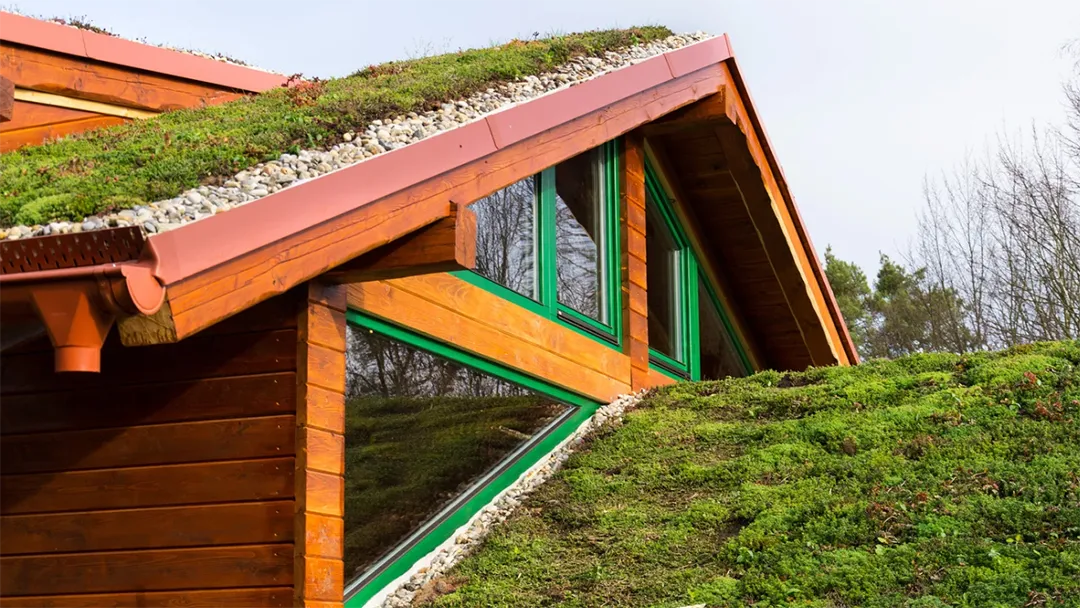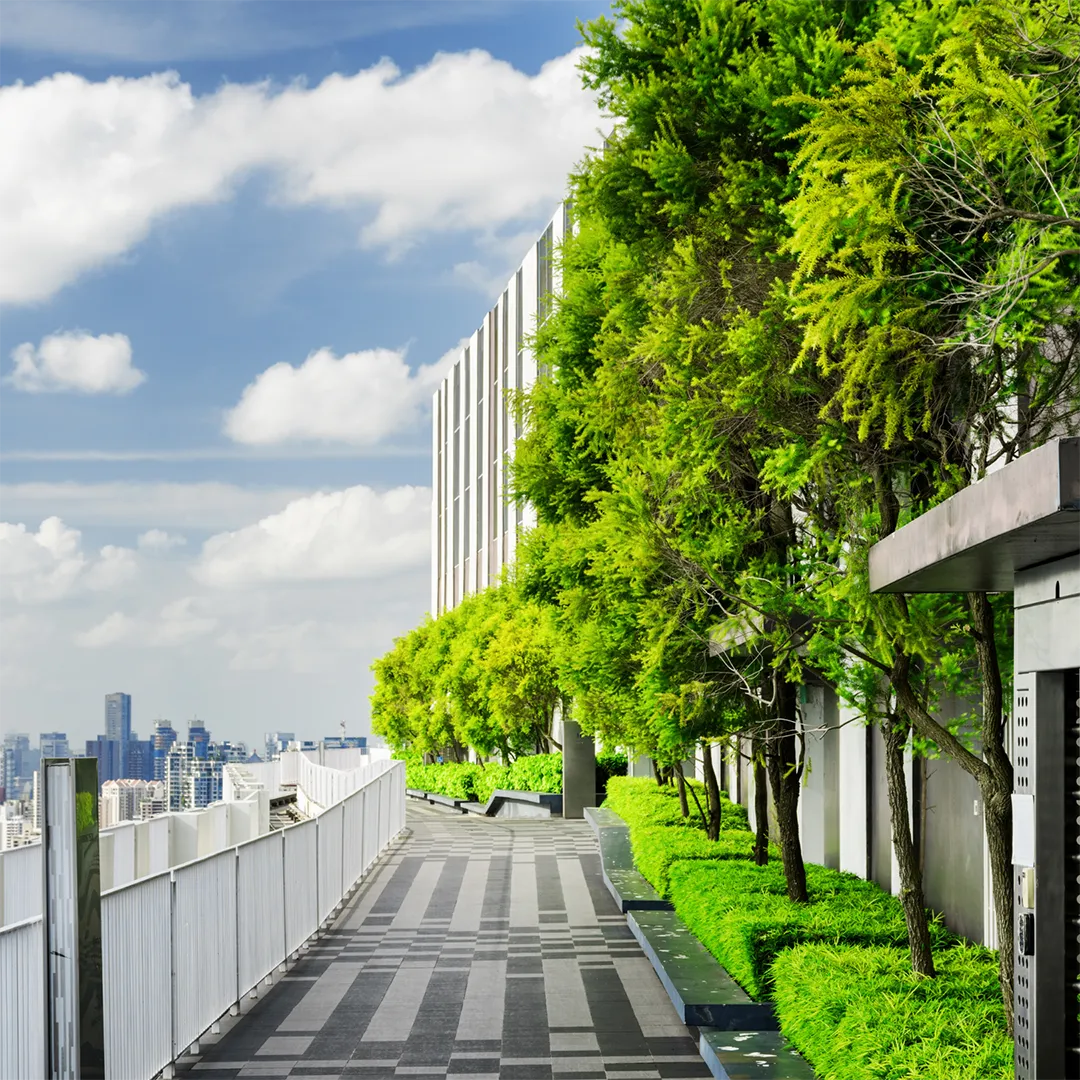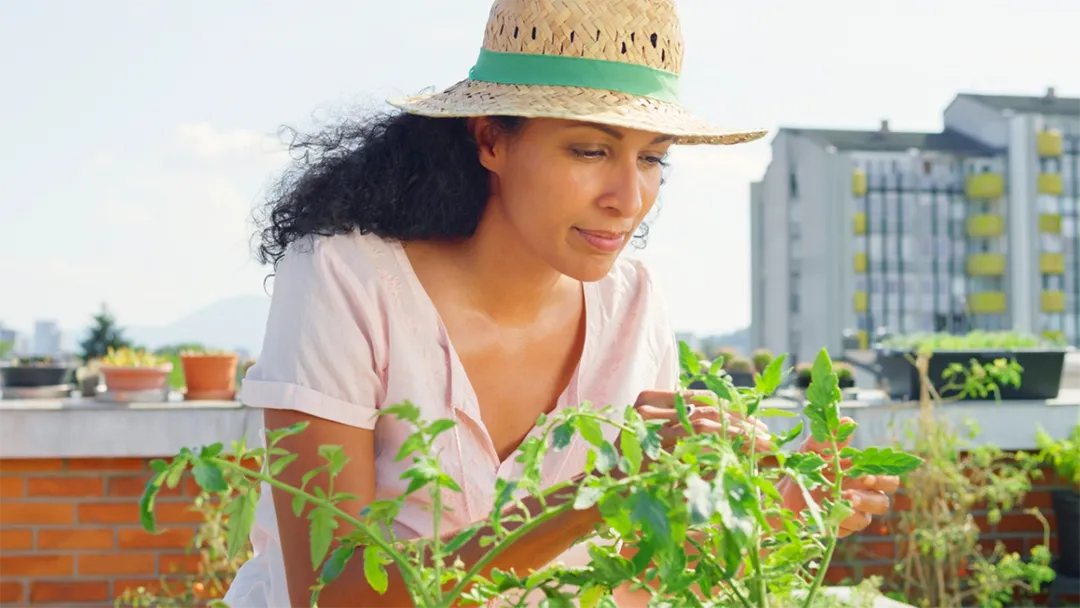
Green roofs are becoming a hot topic in the world of commercial buildings. Gardens on rooftops – filled with plants, flowers, and sometimes vegetables – offer a range of benefits that make them a smart choice for sustainable design. So, if you’re an architect or designer looking to take your projects to the next level, green roofs should be on your radar.
The benefits of green roofs

1. Energy efficiency: cut costs and stay cool
Let’s start with one of the biggest perks: energy efficiency. Green roofs act as natural insulators, keeping buildings cooler in the summer and warmer in the winter. Less wasted energy means lower energy bills.
In fact, studies show green roofs are so efficient at regulating temperature that they can reduce air conditioning costs by up to 75% during the summer. So, next time you’re designing a commercial building, remember that a green roof isn’t just a sustainable choice; it’s a cost-effective one, too.
2. Stormwater management: save the planet one raindrop at a time
Another major benefit of green roofs is their ability to manage stormwater. Traditional roofs send rainwater straight into drains, which can overwhelm drainage systems and lead to flooding. But green roofs absorb rainwater, reducing runoff and easing the burden on urban systems. This is especially good news for building owners in the Phoenix area where stormwater adds up quickly. We may not get much rain annually, but the monsoon season takes a massive toll on our infrastructure. By reducing runoff, green roofs help lower flooding problems and minimize the risk of water damage to the building.
3. Biodiversity: turn rooftops into mini ecosystems
Green roofs allow entire habitats to develop and increase biodiversity. Adding a large variety of plants to a commercial building turns the roof into a mini ecosystem that supports birds, bees, and other wildlife. This is particularly important in urban areas, where natural habitats are already scarce. Who doesn’t love the idea of turning a concrete jungle into an actual one?
4. Air quality: breathe easy in the concrete jungle
Green roofs improve air quality. Plants naturally filter pollutants and carbon dioxide out of the air, replacing toxins with fresh oxygen. This is especially beneficial in densely populated urban areas, where air pollution is a serious issue. According to the American Lung Association’s 2023 “State of the Air” report, Phoenix and Scottsdale have some of the worst air quality in the United States. This means we need greenery anywhere we can get it, and commercial buildings are prime real estate.
Green roofs mean healthier air for everyone. So, when you’re pitching green roofs to your clients, don’t forget to mention the health benefits—it’s not just about going green; it’s about breathing easy, too.
Ready to make your building more eco-friendly with a green roof? Contact us today to start your project!

Design considerations for green roofs
1. Structural Support: can your roof handle the greenery?
Before you start planting, it’s important to consider the structural support of the building. Green roofs can be heavy when fully saturated with water. Ensure that the roof is strong enough to support the additional weight. Depending on the building’s purpose and design, this might involve reinforcing the roof or using lighter building materials. Contact a structural engineer to ensure that the roof can handle the load.
2. Arizona plant selection: will your plants withstand the heat?
When choosing plants for a green roof, not all greenery is created equal. You’ll need to select plants that can withstand the Arizona climate, require minimal maintenance, and have shallow root systems. Plant Solutions will take care of plant selection with you to ensure it’s resilient and nurtured with care on a routine schedule.
3. Irrigation and drainage: what’s best for the greater Phoenix area?
Finally, you’ll need to consider irrigation and drainage. While green roofs absorb quite a bit of water, they still need proper drainage to prevent waterlogging. And since we’re located in the greater Phoenix area, some form of irrigation will most certainly be necessary. Installing a drip irrigation system and a sound drainage system will help maintain the right moisture balance. This ensures that your green roof stays healthy without causing water-related issues for the building below.
Let’s turn those rooftops green.
Green roofs are more than just a trend—they’re a smart, sustainable design choice for commercial buildings and cities at large. From energy savings to stormwater management, from biodiversity to better air quality, the benefits are obvious. With the right design considerations in mind, you can create a green roof that looks and feels fantastic. After all, it’s not just about creating a beautiful space—it’s about building a better future, one rooftop at a time.
